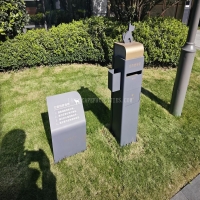Welcome to the website for landscape facilities products and knowledge.
How does the trash can’s design accommodate the use of liners with different permeability levels?
The design of a trash can plays a crucial role in accommodating liners with varying permeability levels, ensuring functionality and hygiene. Modern trash cans often feature reinforced rims or smooth edges to prevent tears in thinner, more permeable liners, while also supporting thicker, less permeable options. Some models include built-in mechanisms, such as elastic bands or clips, to secure liners firmly, regardless of their material or permeability.
Additionally, ventilation systems in certain trash cans help manage odors when using highly permeable liners, while airtight lids complement less permeable liners by trapping smells effectively. The choice of materials, like stainless steel or durable plastic, also influences liner compatibility, as rough surfaces may damage delicate liners. By integrating these design elements, trash cans optimize liner performance, catering to diverse waste management needs.
Innovations like adjustable inner buckets or modular designs further enhance flexibility, allowing users to switch between liner types effortlessly. Whether for home or commercial use, a well-designed trash can ensures seamless adaptation to liners of all permeability levels, balancing convenience and sustainability.
Related search:

Recommendation
Outdoor cat and dog feces trash can; Community pet trash can; Metal multi-color design